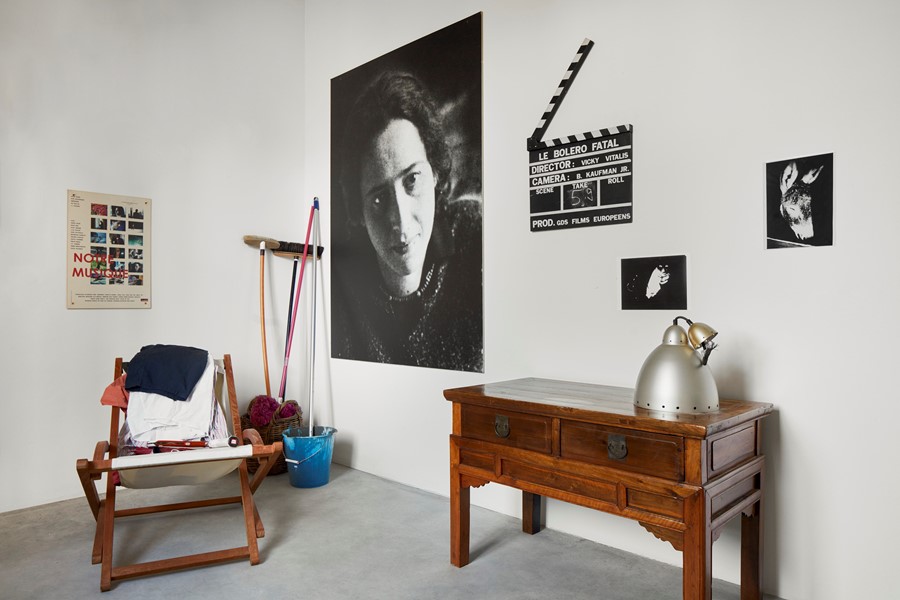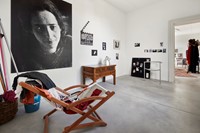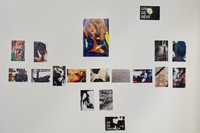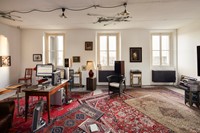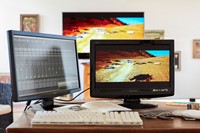The new installation at Fondazione Prada offers an intimate look into the filmmaker’s visionary practice
Jean-Luc Godard is a famously autobiographical auteur. As film critic David Parkinson has noted, the 89-year-old French filmmaker’s pictures are “littered with references to films, books, compositions and paintings, as well as the people, places and political ideals that have shaped his personality and psyche”. Godard enjoys blurring the line between fiction and reality, frequently presents his movies in a fragmented fashion (“a film should have a beginning, a middle and an end, but not necessarily in that order,” he memorably proclaimed) and demands that his viewers participate in his work, rather than simply sit back and enjoy it. “I don’t really like telling a story,” he has said. “I prefer to use a kind of tapestry, a background on which I can embroider my own ideas.”
His latest project, a long-term collaboration with the Fondazione Prada titled Le Studio d’Orphée (“Orpheus’ studio”) is an extension of this artistic conceit. Rather than simply present an exhibition on his creative practice, Godard allows viewers to inhabit it. He has created what he terms an atelier (“a recording and editing studio, a living and working place”), a name that nods to the intense craftsmanship behind his filmmaking. And indeed, the atelier contains various items of technical gear used by Godard during the editing, sound mixing, production and post-production of his recent films. Alongside this, chairs of varying shapes and sizes, side tables of differing heights, all kinds of lamps and a number of overlapping rugs fill the space, as well as artworks, books and other personal paraphernalia, evoking a sort of living-room-cum-study.
Within the comfort of this intimate environment – which opens to the public for the first time today – visitors will be able to watch some of Godard’s films, screened on a large monitor (usually used by the director as a working tool) placed atop a small wooden chest of drawers. These include his most recent feature Le Livre d’image (The Image Book, 2018) and nine shorts made between 1993 and 2008. The mystifying, fragmentary and multi-layered nature of Le Livre d'i’mage, which combines words and digitally altered, colour-saturated film clips to offer up a confounding yet powerful social commentary, is purposefully mirrored in Godard’s atelier, the exhibition text informs us. “[The elements on display] create a spatial and emotional geography, within which visitors will be invited to live an experience of exploration, without imposed ideas or a univocal interpretation.”
Unsurprisingly, Godard is not giving interviews on the occasion of Le Studio d’Orphée’s opening, so those intrigued by this peep-hole into the director’s visionary working methods will just have to visit it for themselves. But a typically enigmatic quote of his may hint at the wider intention of this meaningful curation of objects by way of exhibition (timed, intentionally or not, to coincide with Godard’s 89th birthday): “Objects exist and if one pays more attention to them than to people, it is precisely because they exist more than the people. Dead objects are still alive. Living people are often already dead.”
Le Studio d’Orphée is open to the public from Wednesday to Monday from 1pm to 7pm. Booking is required to visit the space and can be made by all visitors holding an admission ticket at Fondazione Prada’s desk, upon availability.
